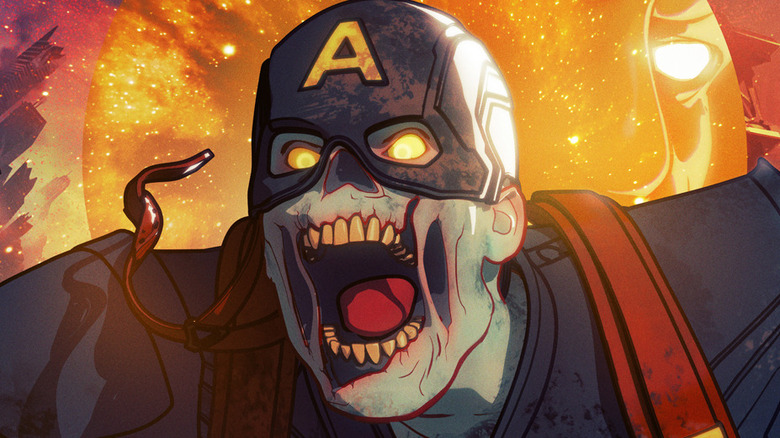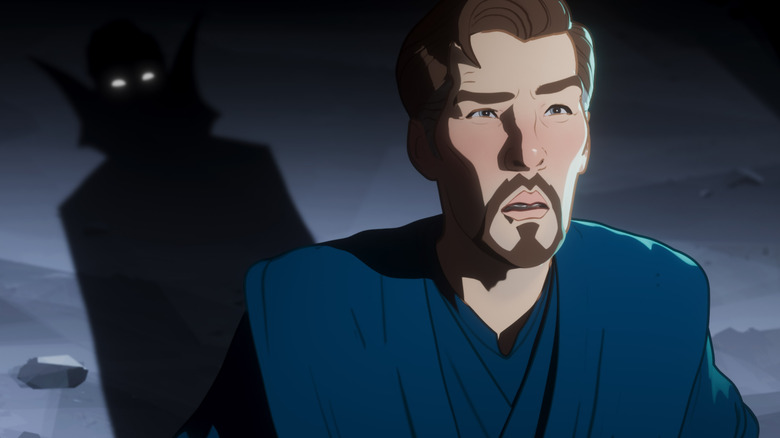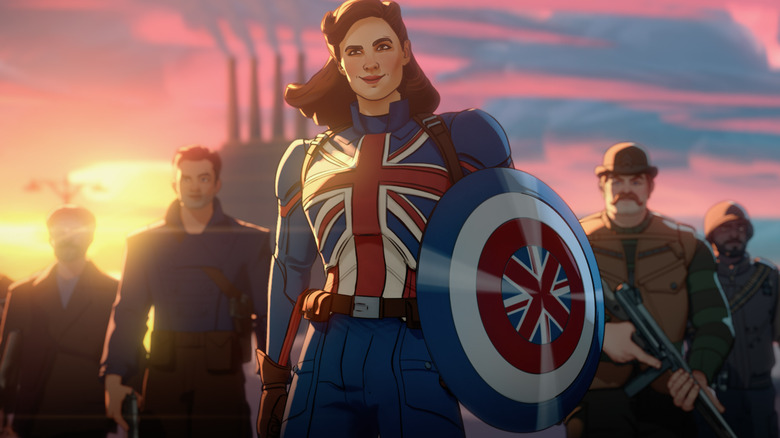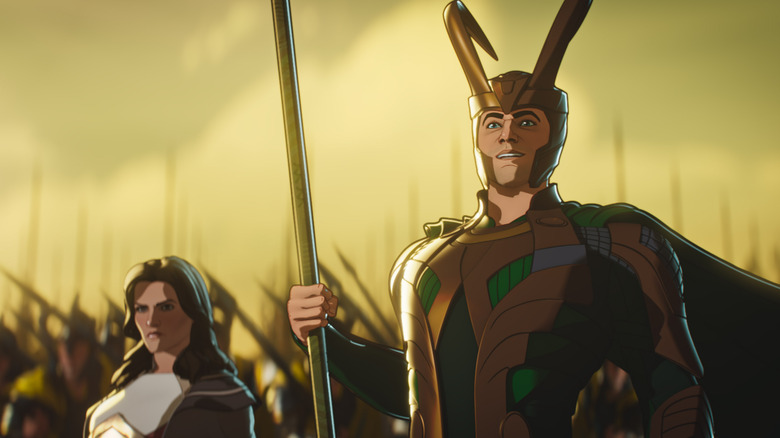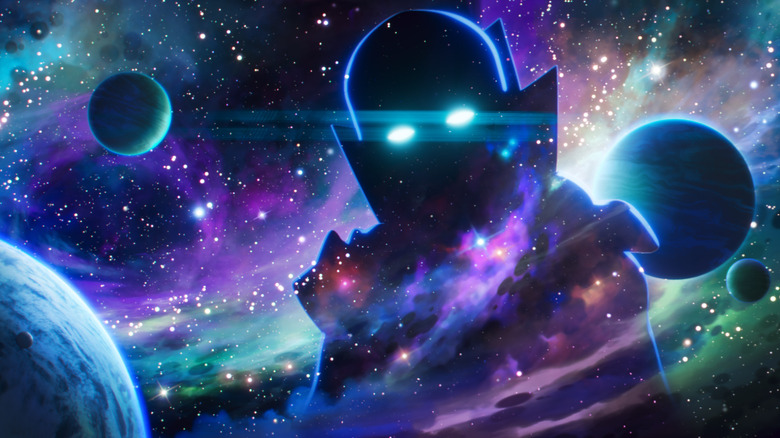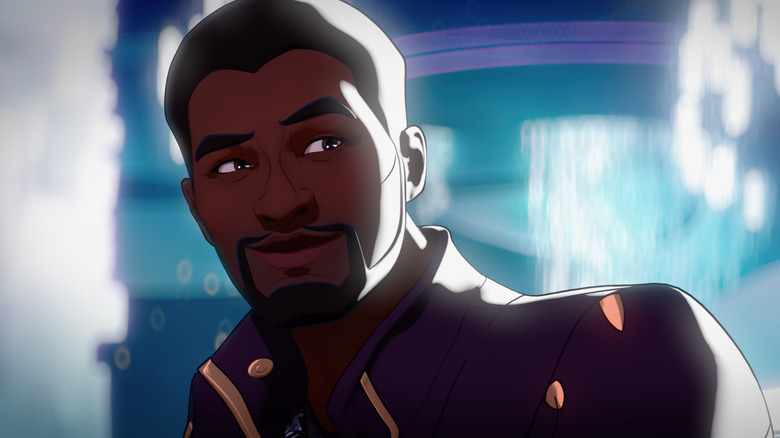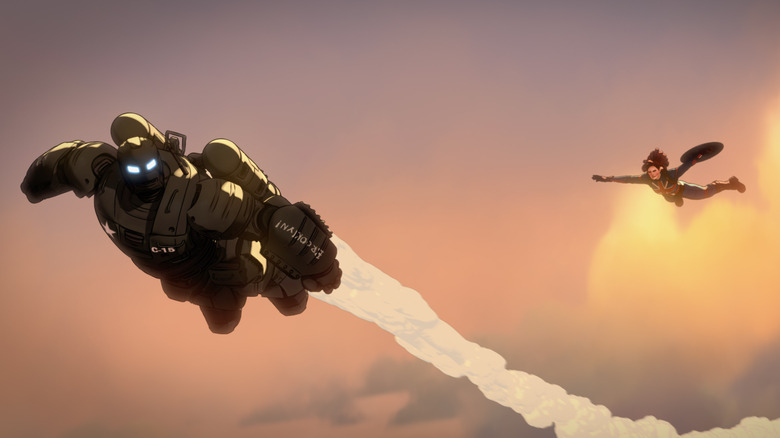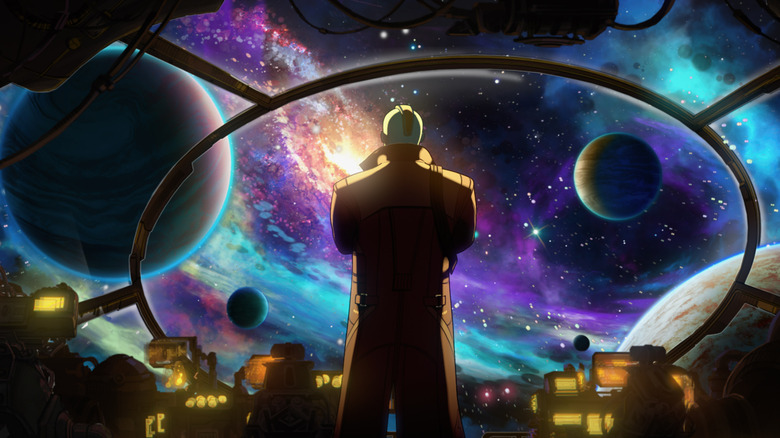What If...? Production Designer Paul Lasaine Dishes On The Surprising Direction Of The Series - Exclusive Interview
The role of a production designer is very different on an animated series than it is on a live-action show or movie. "What If...?" production designer Paul Lasaine is one of the most integral people involved with the show, tasked with making sure everything runs smoothly when it comes to the series' animation and art.
Coming from a background with hit films and TV shows like "Dick Tracy," "Hocus Pocus," "Batman Returns," the "Lord of the Rings" trilogy, and "Spider-Man: Into the Spider-Verse," Lasaine was the perfect person for the job. With a career spanning back to the late '80s, Lasaine has experience in almost every aspect of visuals and design. This allowed him to connect and be a sounding board for all of the artists on the "What If...?" set.
Looper spoke to Paul Lasaine during an exclusive interview where he dished on his role as production designer, revealed the original plan for the series that didn't pan out, and delved into the most surprising aspect of his job.
The artist inspiration for What If...?
What were the initial meetings like with director Bryan Andrews? And can you think of anything you had planned that ended up going in a completely different direction?
The first meetings were really just talking about whether or not we could pull this off and talking about, from my perspective, how this design is going to work and the influences. Right away he said we really want this to be based on the work of Jason Leyendecker, at least the design style and certainly the character style. So we talked a little bit about that, and the feasibility of it, and knew pretty much very quickly that it was going to be really tricky to pull it off.
We talked about other artists, influences like Mead Schaeffer, Dean Cornwell, a lot of the early, early 20th century American illustrators. We talked about cinematic influences, a lot of film, more ... a lot of anime, Japanese style anime, specifically, obviously. And we talked about things that we didn't want. Stylistically we didn't want it to look Saturday morning. We didn't want it to look cute. We want it to have the gravity of the MCU, a lot of stuff like that. Just what flavor and what target we wanted to hit. We knew very early on we wanted to hit literally the same target as the MCU.
The plan that got scrapped
Did any of the final products for any of the characters surprise you?
Right. And you asked a question about, did anything turn out differently. To be honest? No, we were able to hit what we tried to hit. I mean, there's a little technical thing. Okay, here's the one thing that didn't happen the way we wanted and ended up breeding its own new thing.
We were originally going to try to do the entire show completely, traditionally 2D animation — hand-drawn characters, everything basically with a pencil, old school. That didn't pan out. And the reason for that was we had trouble finding enough animators that are able to do human, realistic animation in the U.S. There are a few left, but honestly, since the advent of CG animation, that's literally a dying breed. And most of the good ones are all directors now, and they're not animating because they're out there directing.
The trials of animating in the U.S.
There are a number overseas, but we needed them to be here. We were going to try to do it here. We found out pretty quickly that wasn't going to happen. So we jumped to CG, and that's been fine. Obviously, that's been the way we've done it. But, and when I say CG, it's not computer-generated imagery, the animators are animating in 3D, but the rendering technique made them totally mimic 2D complete with line work.
And in terms of the environments, we're absolutely doing drawings and paintings. Some of those drawings are being informed by 3D models. We often build a 3D set and do a translation from that. It's usually just take a screengrab of it, do a line drawing on top of it, add in set dressing and all the cool details and style. And then that goes to painters who are painting them in Photoshop primarily. There are a couple sets. A couple of our vendors have been experimenting with doing actual 3D, like renders for the environments. And they've had some success with it, but even they're finding out that's more complicated than they want it to be.
I'm talking a mile a minute. But anyway, so the 2D/3D pipeline that we've kind of come up with has been the biggest surprise, and it's cool. I really like it. I mean, it's super flexible.
From Lord of the Rings to the MCU
You've also been in the art department of some incredible films, like "Rise of the Guardians" and "Spider-Man: Into the Spider-Verse," and you were the art director on "The Road to El Dorado." So what have been some of the highlights of your career, and how does "What If...?" fit in?
The shows that I actually think of as the ones that have been the most important to me, one of them was before that it's "Dick Tracy," which was a live-action show. I was one of the heads of the matte painting department. I was a traditional mapping on that. "Prince of Egypt" was a huge one for me. That was my first foray into animation. I wasn't an art director, but I was the co-head of the background painting department. I might as well have been an art director, I just didn't get the credit.
"El Dorado" was my first art director credit. I didn't last on that show that long. Christian Schellewald was the chief designer on that show. He was really the brainchild behind all of that, or that was his brainchild to look at that show.
I left that show to go on to "Lord of the Rings," which was the most important project that I've ever worked on in my mind, because, well, it was just, I mean, it's one of those kind of landmark projects that you're just lucky to ever get near. I mean, there have been a few of them, I think. "Star Wars," "Lord of the Rings," and "Harry Potter" for these generations are those three. And I got one of them. I worked downstairs from the "Star Wars" guys for a while being in the MCU.
Because we shared a building. And that stuff is incredibly influential — you carry all of that information with you, all the experiences, obviously this show is its own anime, so it's completely different, but the experiences are all there.
A team effort
Is there anything you learned on any of those that you brought with you to "What If...?"
God, everything. Literally everything. And I mean, either, like how to design a certain thing? How to handle a brushstroke a certain way? You work with so many artists, and you see all the things that they're doing. It's like being in school constantly. We all share our ... I mean, even as simple as, "Hey, I use this Photoshop brush, how do you do that?" "Oh, I'll show you, I'll show you this cool trick." Little things like that. Or larger things like how to handle a production meeting, how to talk to an executive, how not to talk to an executive, how to deal with people and their personal problems. I call this the "Here's what they don't teach you in art school" thing.
And I talk about this with my crew all the time. We've got fantastic artists. That's a given when you go to school, and you learn how to be a fantastic artist, that's a given. What you don't learn is all the rest. Again, like how to deal with the fact that someone on your crew is getting a divorce. How to deal with an executive that is not working the way you expected. Things like that, and you carry that with you. That's the experience.
Art school meets psychology
What's the most interesting thing about your role on "What If...?" that might surprise people?
I think it's that you're almost more psychologist than you are a designer. You're dealing with people all the time, and they're brilliant people, and they're artists, they've got personalities, and they've got the ways that they want to work, and the way they work with each other, and the way they handle themselves. One of the other things that people don't think about it, we've got tens of thousands of pieces of artwork that need to be generated, hundreds of thousands possibly by the end of the entire show. And you can't do it yourself. You've got to have multiple people doing this stuff.
So being able to wrangle everybody is a huge part of the job. And again, we learn how to be artists — I wouldn't get this job unless I was an artist. But the last thing I'm doing on my day is doing art. I very rarely get to paint, and I very rarely get to design myself. I've got to be the general. I've got to be working with my lieutenants and helping them now work with artists because they're also having to deal with a team. That's actually the kind of stuff that nobody thinks about.
Time is never on our side
Now that we're four episodes in, is there anything you regret about the final products of any episodes, characters, or settings? Would you want to change anything?
I think the only thing I wish that we had was more time. That's the only regret, and it is what it is. It's a regret always — that you wish you could put more into it. This show is extremely ... This is advanced animation. This isn't kid stuff. It's not flat simple, and I'm not being disparaging at all, but it's not the simple stuff.
This is definitely upper-division animation done on an extremely accelerated schedule. And I'm going to call it a low budget, low budget for what I'm used to in features. I'm used to a $100 million budget for four years. Our budgets are not like that. Our schedules are not like that. We get an average of six to seven weeks to design an entire episode.
We do an amazing amount of work in that time. And I'm insanely proud and surprised every time an episode comes out, and we go, "Oh my God, it actually works. It looks really good." But the one thing I wish was that we could've done more. I wish we could have done a little bit better shading on a character. I wish we could have done cast shadows.
I wish we could have done more layers of a parallax when the cameras are moving. I wish we didn't have to simplify so much. At the same time, there's a style that comes from that, and we embrace that too. There's something very elegant about the simplicity and the limitations that happen when you do have a shorter schedule.
New episodes of "What If...?" stream Wednesdays on Disney+.
